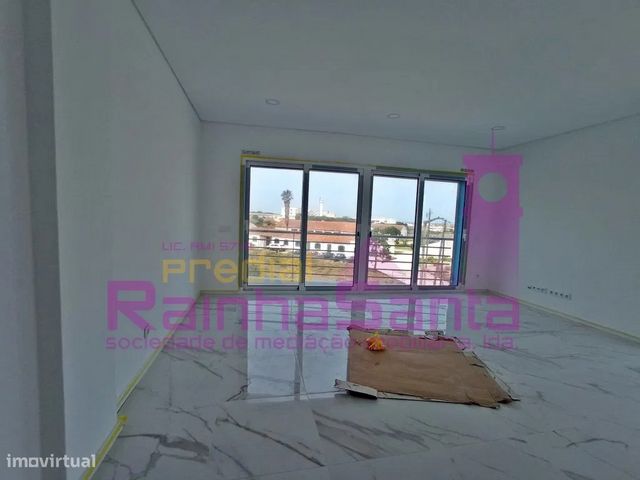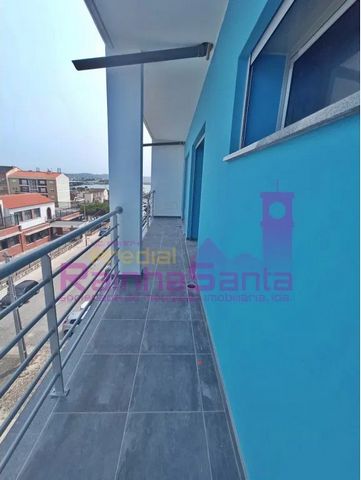3 173 072 SEK
3 807 686 SEK














Map of finishes:
Double insulation with thermal and acoustic blanket.
Solar panels connected to the water heater.
kitchen equipped with oven, hob, extractor fan and water heater.
Pre installation of hot and cold air conditioning.
Pre-installation of central vacuum.
White interior doors in 'finish foil'
'Roca' bathroom crockery with whirlpool bath.
The Rainha Santa Building in Coimbra and Torres Vedras!
Coimbra is one of the oldest cities in Portugal, with Roman, Visigothic origins and Muslim influence. Definitively conquered in 1064, it was the first capital of the kingdom when D. Afonso Henriques settled there with his court. It celebrates its Municipal holiday on July 4 in memory of Queen Santa Isabel of Aragon, patron saint of the City.
In 1290, the oldest University in the country and one of the oldest in the world was created by D. Dinis. It began to operate in Lisbon and was definitively transferred to Coimbra in 1537 by order of King D. João III. Initially restricted to the Paço das Escolas, over the years the University was extended throughout Coimbra, thus modifying the landscape and making it the University City we know today. Since 2013, the University of Coimbra has been considered a UNESCO World Heritage Site, given its unique tangible and intangible heritage, essential to the history of European and World scientific culture.
A privileged city for its geographical position in the center of mainland Portugal, between the cities of Lisbon and Porto and 40km from beaches.
What connects Coimbra to Torres Vedras?
In common with Coimbra, Torres Vedras has a medieval castle and a history that dates back to the Roman occupation. The city of Torres Vedras had its first human occupation during the Roman invasion of the Iberian Peninsula. The fortification of Torres Vedras was taken in 1148 by the forces of Dom Afonso Henriques, whose tomb is in Coimbra in the Monastery of Santa Cruz. It is said that in 1184, he resisted, for eleven days, the siege that was imposed on him in vain by a column of Muslim troops scattered throughout the region of Santarém. He later received the honours of Dom Dinis of Portugal (The Farmer) and was king of Portugal and the Algarve from 1279 until his death.
Energy Rating: A+ Visa fler Visa färre Excelente apartamento em fase de construção.
Mapa de acabamentos:
Isolamento duplo com manta térmica e acústica.
Painéis solares com ligação ao esquentador.
cozinha equipada com forno, placa, exaustor e esquentador.
Pré instalação de ar condicionado quente e frio.
Pré instalação de aspiração central.
Portas interiores brancas em 'finish foil'
Louças de wc 'Roca' com banheira de hidromassagem.
A Predial Rainha Santa em Coimbra e Torres Vedras!
Coimbra é uma das cidades mais antigas de Portugal, com origens romanas, visigóticas e influência Muçulmana. Definitivamente conquistada em 1064, foi a primeira capital do reino quando D. Afonso Henriques ali se instalou com a sua corte. Festeja o seu feriado Municipal a 4 de julho em memória da Rainha Santa Isabel de Aragão, padroeira da Cidade.
Em 1290 foi criada por D. Dinis a mais antiga Universidade do país e uma das mais antigas do mundo. Esta começou por funcionar em Lisboa tendo sido transferida definitivamente para Coimbra em 1537 por ordem do Rei D. João III. Inicialmente restrita ao Paço das Escolas, ao longo dos anos a Universidade foi-se estendendo por Coimbra, modificando assim a paisagem e tornando-a na Cidade Universitária que hoje conhecemos. Desde 2013 que a Universidade de Coimbra é considerada Património Mundial da UNESCO dado o seu património material e imaterial único e essencial à história da cultura científica Europeia e Mundial.
Cidade privilegiada pela sua posição geográfica no centro de Portugal continental, entre as cidades de Lisboa e do Porto e a 40km de praias.
O que liga Coimbra a Torres Vedras?
Em comum com Coimbra, Torres Vedras tem um castelo medieval e uma História que remonta à ocupação Romana. A cidade de Torres Vedras, teve a sua primeira ocupação humana aquando a invasão Romana da Península Ibérica. A fortificação de Torres Vedras foi tomada em 1148 pelas forças de Dom Afonso Henriques, cujo túmulo se encontra em Coimbra no Mosteiro de Santa Cruz. Consta ter resistido em 1184, por onze dias, ao assédio que em vão lhe foi imposto por uma coluna das tropas muçulmanas espalhadas pela região de Santarém. Recebeu mais tarde as honras de Dom Dinis de Portugal (O Lavrador) tendo sido rei de Portugal e do Algarve de 1279 até à sua morte.
Categoria Energética: A+ Excellent apartment under construction.
Map of finishes:
Double insulation with thermal and acoustic blanket.
Solar panels connected to the water heater.
kitchen equipped with oven, hob, extractor fan and water heater.
Pre installation of hot and cold air conditioning.
Pre-installation of central vacuum.
White interior doors in 'finish foil'
'Roca' bathroom crockery with whirlpool bath.
The Rainha Santa Building in Coimbra and Torres Vedras!
Coimbra is one of the oldest cities in Portugal, with Roman, Visigothic origins and Muslim influence. Definitively conquered in 1064, it was the first capital of the kingdom when D. Afonso Henriques settled there with his court. It celebrates its Municipal holiday on July 4 in memory of Queen Santa Isabel of Aragon, patron saint of the City.
In 1290, the oldest University in the country and one of the oldest in the world was created by D. Dinis. It began to operate in Lisbon and was definitively transferred to Coimbra in 1537 by order of King D. João III. Initially restricted to the Paço das Escolas, over the years the University was extended throughout Coimbra, thus modifying the landscape and making it the University City we know today. Since 2013, the University of Coimbra has been considered a UNESCO World Heritage Site, given its unique tangible and intangible heritage, essential to the history of European and World scientific culture.
A privileged city for its geographical position in the center of mainland Portugal, between the cities of Lisbon and Porto and 40km from beaches.
What connects Coimbra to Torres Vedras?
In common with Coimbra, Torres Vedras has a medieval castle and a history that dates back to the Roman occupation. The city of Torres Vedras had its first human occupation during the Roman invasion of the Iberian Peninsula. The fortification of Torres Vedras was taken in 1148 by the forces of Dom Afonso Henriques, whose tomb is in Coimbra in the Monastery of Santa Cruz. It is said that in 1184, he resisted, for eleven days, the siege that was imposed on him in vain by a column of Muslim troops scattered throughout the region of Santarém. He later received the honours of Dom Dinis of Portugal (The Farmer) and was king of Portugal and the Algarve from 1279 until his death.
Energy Rating: A+